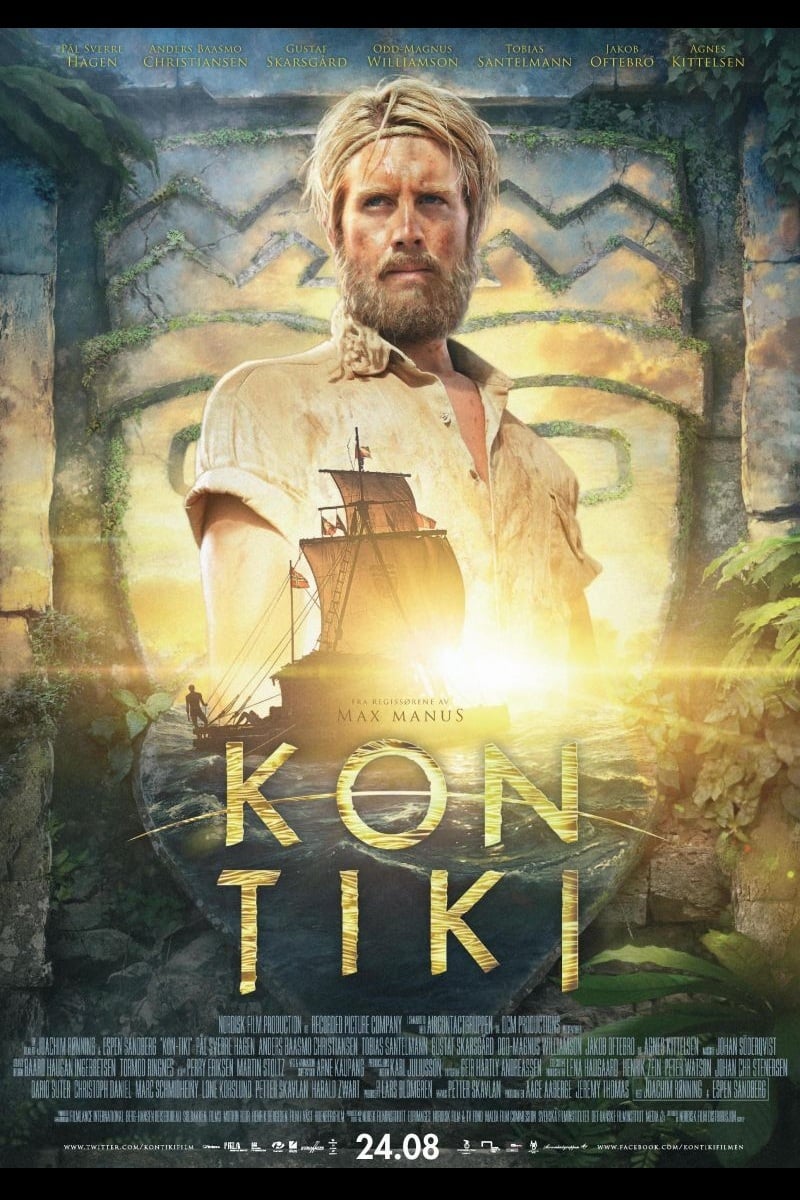

military on the condition the adventurers submitted a review of their quality when they returned.

Kon-Tiki itself was made of nine balsa would tree trunks lashed together with hemp rope.Ģ50 liters of drinking water were stored in bamboo tubes, and the crew took a large store of food with them, mainly a mix of coconuts, sweet potatoes and other fruit and vegetables - plus a cache of survival rations donated by the U.S. All were recruited via a short note: "Am going to cross the Pacific on a simple raft to support a theory. He was accompanied by five other men, four Norwegians and one Swede. But to many, many others the explorer's courage, optimism and enthusiasm were the perfect distraction from a world still bruised by World War II and nervously watching the increasingly tense standoff between the United States and Soviet Union.Īlthough Heyerdahl did take some modern equipment - such as radios, charts and a sextant - he argued these were all incidental to testing the theory that the craft itself could make the 4,300 mile journey across some of the most challenging seas on Earth. To some it might have seemed at odds with the new era of the atom bomb and jet-powered flight.


Heyerdahl's mission was to use primitive, indigenous technology to prove his theory that people from South America could have colonized Polynesia. His book became a best-seller and a documentary film about his voyage won an Academy Award in 1951. On ApHeyerdahl had set out from the coast of Peru, cutting through the waves aboard Kon-Tiki, a simple raft made from balsa wood logs, based on drawings made by Spanish conquistadors, and begun a long, strange journey that would grip the world. you are suddenly astonished, and ask yourself how in the world it came about?"Ĭonsidering that, at the time, he was adrift in the Pacific on a raft with five men and a parrot, it wasn't a strange question to be asking. (CNN) - "Once in a while you find yourself in an odd situation," wrote Norwegian explorer Thor Heyerdahl in Kon-Tiki: Across The Pacific by Raft. Group sought to prove people from South America could have colonized Polynesia.Heyerdahl was joined on 1947 expedition by small group of scientists.Norwegian adventurer Thor Heyerdahl sailed on balsa raft across Pacific Ocean.


 0 kommentar(er)
0 kommentar(er)
